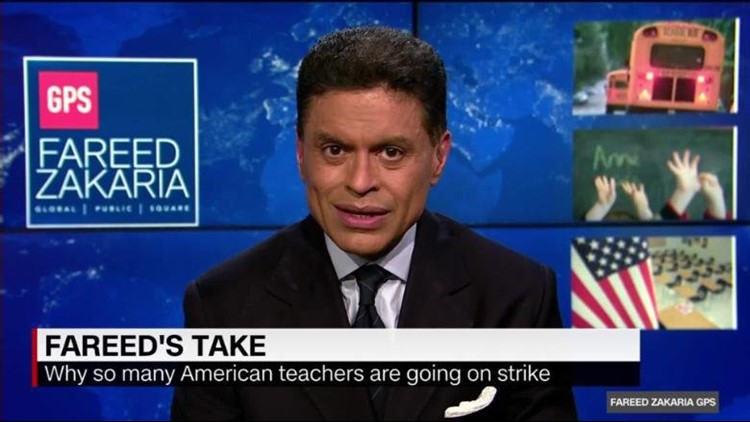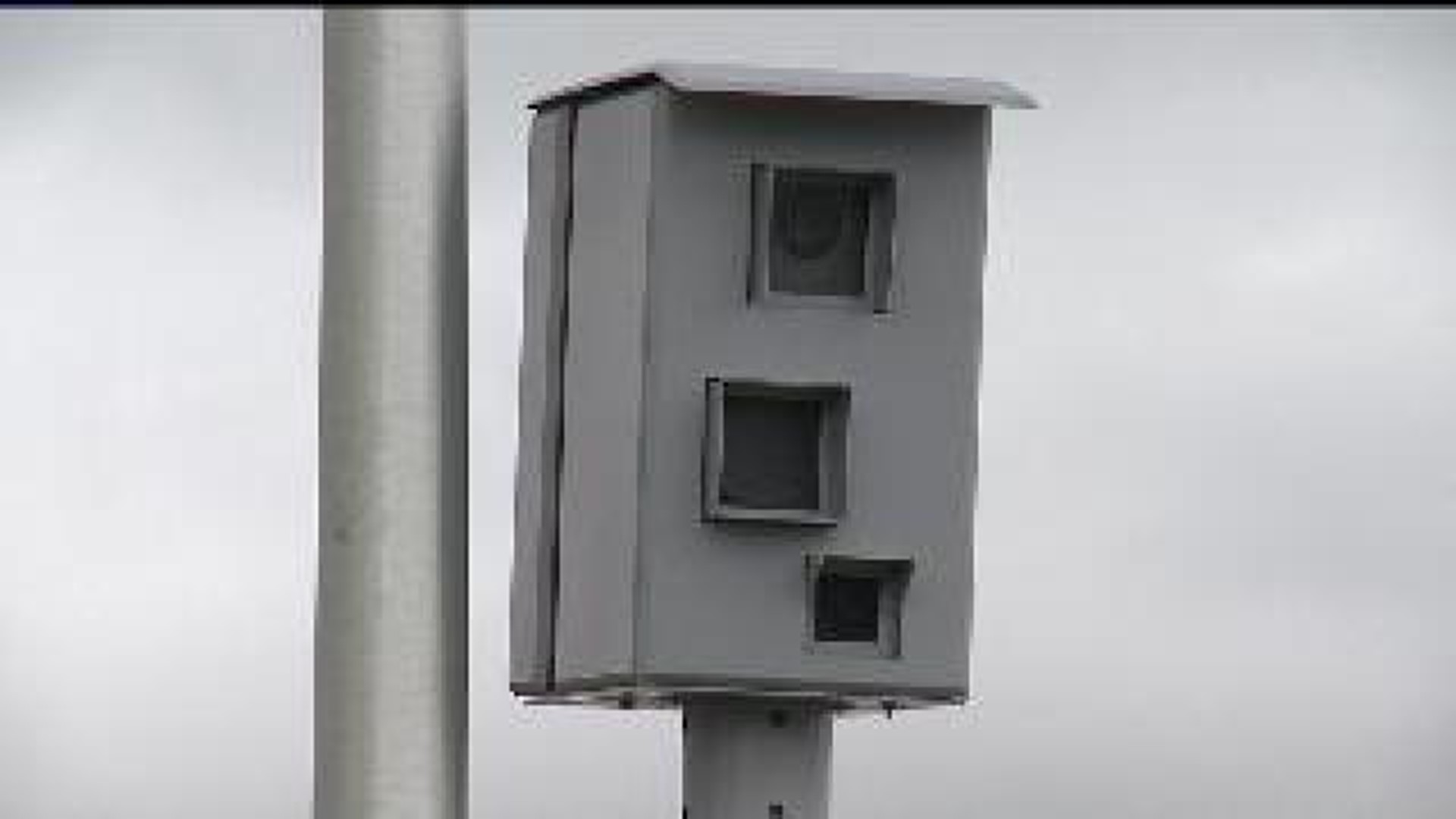This was the school year teachers reached their breaking point.
From West Virginia to Arizona, they walked out en masse to protest at their state capitols. Many were tired of working multiple jobs and wanted higher salaries.
Even more demanded better school funding for their students to replace crumbling textbooks and archaic supplies.
Sometimes they got what they wanted. Other times, they didn’t. Here’s a look at which battles teachers won and lost — and why this all went down now.
West Virginia
What teachers wanted: West Virginia teachers — with an average salary of $45,642 — demanded better pay and a fix to the Public Employees Insurance Agency.
The night before the strike began, Republican Gov. Jim Justice signed off on a 2% teacher raise this year and 1% raises for each of the next two years — still not enough to keep up with inflation. So the first statewide teacher strike of the year ensued.
What they got: After nine days of the strike, Justice agreed to a 5% raise for teachers. As part of the negotiations, legislators also agreed to give all state employees a raise. The governor also issued an executive order aimed at creating a long-term revenue fix to public employees’ insurance program.
What’s going to happen next: While the strike ended amicably — with both teachers and lawmakers celebrating — some teachers and students will now have to prolong the school year into June to make up for days lost to the strike.
Oklahoma
What teachers wanted: Like West Virginia, teachers in Oklahoma rank in the bottom three states for teachers salaries. Veteran teachers had often worked about 10 years before cracking the $40,000 mark.
The Oklahoma teachers’ union wanted $10,000 raises for teachers; $5,000 raises for support staff, such as janitors and cafeteria workers; and $200 million in education funding.
What they got: Shortly before teachers walked out, Gov. Mary Fallin approved an average raise of $6,100 for teachers; $1,250 for support staff; and a $50 million increase in education funding — fractions of what teachers wanted.
But after nine days of protests, lawmakers didn’t budge. The walkout ended with no additional school funding.
What’s going to happen next: Disappointed by the lack of progress at the Capitol, some Oklahoma teachers are now running for state office.
“It seems insane to me that we have to go to those lengths to get basic supplies,” said teacher Laura Griesel, who’s running for state representative.
Teacher Kelly Craig said the legislature should brace for change in November.
“While it’s disheartening that the walkout ended, the walkout forced change that Oklahomans will see this November,” she said.
Kentucky
What teachers wanted: Kentucky teachers also wanted more funding to pay for textbooks, technology and school programs. But what really fueled their protest was what they called a “bait-and-switch” move to make changes to their pensions.
Lawmakers had slipped the changes to teachers’ pensions into a bill about sewage and passed the bill.
Kentucky teachers denounced that move and also called for lawmakers to override the Gov. Matt Bevin’s vetoes of House bills 200 and 366, about the budget and revenue.
What they got: Teachers lost their fight over the pension reform bill, which Bevin signed into law.
But the Kentucky Education Association applauded the legislature’s decisions to override Bevin’s vetoes of House bills 200 and 366. A compromise budget plan “increases per pupil SEEK funding to $4,000 per student, the highest dollar amount that has ever been appropriated,” the KEA said.
“We acknowledge neither bill gives the citizens of the Commonwealth everything that our students, their parents, and our communities need. … However, both bills provide much needed P-12 funding for the next biennium.”
What’s going to happen next: A high school teacher frustrated by lawmakers could become a House representative.
Teacher Travis Brenda defeated House Majority Floor Leader Jonathan Shell in the Republican primary and now faces Democrat Mary Renfro in November’s general election.
Shell, the outgoing lawmaker, had a role in passing a controversial pension bill this year that sparked outrage from teachers.
Arizona
What teachers wanted: Arizona Educators United wanted a 20% raise for teachers by next school year and yearly raises after that until Arizona’s teacher salaries reach the national average.
The group also wanted lawmakers to restore education funding to pre-recession 2008 levels and demanded no new tax cuts until per-student spending reached the national average. It laid out a goal of limiting class sizes 23 students per class.
What they got: It took six days, but Arizona teachers ended their walkout after the governor signed an education funding bill into law.
The measure, dubbed the “#20×2020” plan, raises teachers’ pay by 20% over the next three years. The new law also increases funding for support staff, new textbooks, upgraded technology and infrastructure, which will help make up for recession-era cuts.
What’s going to happen next: While many teachers cheered the wins, some said the fight will continue.
Arizona Educators United pointed out that several teacher-supported amendments didn’t pass — like lowering the student-counselor ratio from 900:1 to 250:1.
“Overall the general consensus among teachers seems to be that this was a small win for now with many, many huge battles ahead,” teacher Christina Waters tweeted.
Colorado
What teachers wanted: The Colorado Education Association wanted more education funding and a sustainable fix to PERA, the state’s public employees retirement program.
Teachers were especially angry because Colorado basically underfunded schools this year by $828 million, the education association said. That’s because Colorado hasn’t kept up with a state constitutional mandate to increase funds each year by at least the rate of inflation.
In addition to the statewide protest, teachers in Pueblo launched their own strike against the Pueblo City School District for five days.
What they got: The Colorado Education Association said its legislative agenda largely succeeded “to ultimately provide better outcomes for students — with the exception of PERA.”
The retirement program bill calls for increasing employee contributions and raises the age of retirement for new people in the system to 64.
While the state protest had mixed results, the local teachers’ strike in Pueblo was victorious. After five days, the teachers won concessions from the district such as a 2.5% cost of living adjustment for the next school year and a new health insurance contribution.
What’s going to happen next: The Colorado Education Association said it’s pleased with recent bills to help the teacher shortage — especially in rural areas, where attracting and retaining teachers is challenging.
“These bills are a start at tackling our growing educator shortage and we will look to build on this momentum next session.
North Carolina
What teachers wanted: Although North Carolina teachers received raises in recent years, they were frustrated that they’ve lost 9.4% in pay since 2009, when adjusted for inflation. Per-student funding also hasn’t kept pace since the recession a decade ago.
So the North Carolina Association of Educators wanted lawmakers to:
— Invest more in spending per student
— Create a multiyear pay plan for teachers and all other school personnel
— Increase the number of school nurses, counselors, social workers and other support personnel
— Create a statewide school construction board to fix crumbling schools and reduce large class sizes
What they got: The day before teachers walked out, House and Senate budget leaders agreed to raise teachers’ salaries by at least 6.2% for the upcoming fiscal year. But it wasn’t enough to stop the protest.
What’s going to happen next: While the walkout lasted only one day, the fight is far from over.
“It’s the beginning of a six-month stretch of time to hold our elected leaders accountable for prioritizing corporate tax cuts instead of our classrooms,” the North Carolina Association of Educators said.
“The ultimate goal is to elect more pro-public education leaders in North Carolina and to have long-term, sustainable victories.”
So why is this all happening now?
This wave of protests likely stemmed from a decade of simmering frustration finally boiling over, as teachers continuously had to do more with less.
“During the recession, states across the country adopted austerity budgets that slashed funding for schools, and our students who need the most support bore the brunt of those cuts,” National Education Association President Lily Eskelsen Garcia said.
But while the economy has improved, in many places, teachers’ raises haven’t caught up. Ditto for per-student funding.
“School funding is the same thing — in a lot of states, it hasn’t (reached) the same level of funding that it was before the recession,” said Kency Nittler, manager of teacher trends for the National Council on Teacher Quality.
Eskelsen Garcia lauded the victories made by teachers across the country this year.
“West Virginia will now be able to attract and retain the best educators for their students. Oklahoma students and educators will see an additional half a billion dollars in resources for their classrooms, the largest education budget increase in state history. Arizona students now have a road map to smaller class sizes and educators that will be compensated at a livable level,” Eskelsen Garcia said.
“But there’s still plenty of work to be done,” she said. “If we don’t see continual improvements in how state leaders prioritize our students, there will be accountability in November.”



